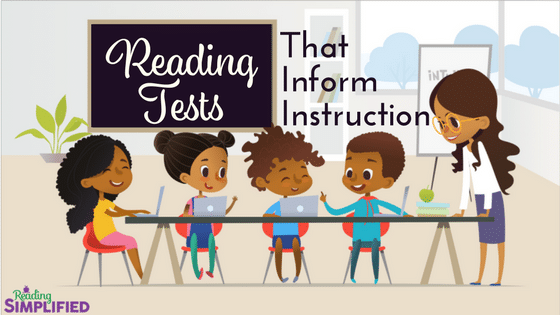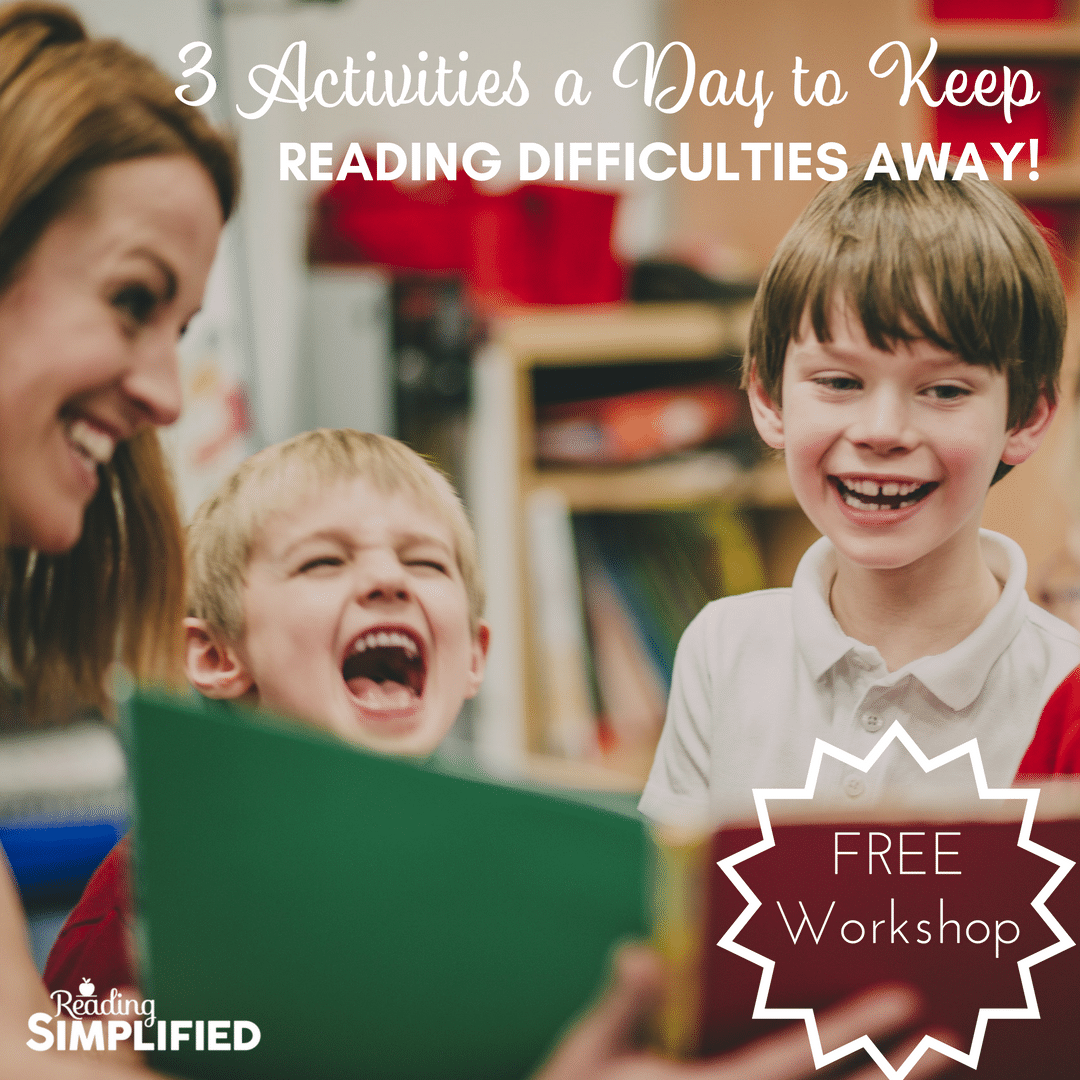Teaching Students to Read When Phonics Isn't Working
Are you worn down from teaching a student (or a group of students) who have seem to have a "sieve brain"?
There's zilch more than frustrating than pedagogy phonics repeatedly to a student and still none of it seems to stick! You teach important content with all the bells and whistles–multisensory, movement, repetition, etc. And so come the side by side twenty-four hours or the side by side 24-hour interval and a student looks at that thoroughly taught letter audio as if he's never seen information technology earlier.
Aggggghhhh!
We've all encountered students like this, and instead of stressing out most it and trying to figure out what you lot're doing incorrect, I'grand going to tell y'all exactly why phonics isn't sticking, and more chiefly…what yous can do nigh it.
[Lookout man the video OR read below for the solution to this sticky problem!]
Why Phonics Isn't Sticking–The Foundational Problem
It may seem equally if some students accept brains similar sieves. When phonics or sight word noesis goes in, information technology tends to skid right back out once more. Nothing seems to stick.
The number one reason why some kids can't make phonics stick is that they have weak sound-symbol decoding.
If a kid has this problem, information technology means that their brains aren't doing a bully job matching sounds with symbols.
Some students will link sounds and symbols haphazardly. They sympathise the link between some of the letters with sounds, but they don't friction match up EVERY letter combination with a detail sound.
For example, a child with weak sound-symbol decoding may come across the word FLAT. She may pronounce Apartment as Fatty. As you lot can see, there is some audio-symbol correspondence in that location, only information technology'south non tightly aligned.
When students add or subtract letter-sounds from an unknown give-and-take, that'southward the teacher's cue that they don't accept strong sound-symbol decoding.
Equally a outcome, the words they are reading are not tightly linking sounds and symbols….
Thus, their encephalon can't memorize data that'southward only loosely linked.
Some kids tin can fob united states with their sound-based decoding. Information technology seems ok–the occasional error here and in that location–merely they definitely utilize sounds to attack unfamiliar words, correct?
Most of these types of readers have a hidden reading weakness, though. They have only a fractional utilize of the our sound-based lawmaking. Delight exist on the sentinel for this weakness as information technology is the virtually mutual struggle I see in students–past far.
Good readers…or those who will become good readers…observe all the little inside parts of words. They take or are developing stiff sound-symbol processing. As a result, words "stick" more easily for them.
Identifying a Sound-Symbol Decoding Weakness
So, how can yous tell if a student has a weak sound-symbol decoding problem?
It's simple.
Listen carefully to the mode the child links symbols with sounds. For instance, is she able to place each audio of the give-and-take FLAT?
We want them to see and read /f/ /l/ /a/ /t/.
A student who struggles with sound-symbol processing may exit out the /fifty/ audio completely, which is a clear sign that there'south an underlying event.
Another choice is to give a quick norm-referenced Nonsense Word Reading assessment. Since the child couldn't have already encountered these nonsense words, the test reveals how strong his/her sound-based decoding organisation is functioning.
On this post, I share 2 free norm-referenced Nonsense Give-and-take Reading tests.

I like to see scores in a higher place class level for Nonsense Word Reading, as proficient readers are almost always excellent at this.
Making Phonics Stick
Only iii core activities can solve a sound-based decoding problem, and they're easier than you might think:
1. Switch It – where the child reads a word like 'Pivot,' and the teacher asks her to switch information technology to 'PAN' – simple.
2. Read It – instruction kids to blend the sounds as they read a word.
3. Sort It – where the student deals with advanced phonics information
The three activities of Switch Information technology, Read It and Sort It are the building blocks that will lay the core foundation skills your students need to understand how each symbol connects to a sound. And so, phonics volition stick!
If you'd like to read more most these activities and lookout man videos of each in action, then click the links above.
OR, I host a complementary on-demand workshop explaining all 3 core activities and how they are and so powerful. Head to this link to participate in this workshop, 3 Activities a Day to Keep Reading Difficulties Abroad

Sort It every bit the Chief Hub for Making Phonics to Stick
Sort It is the main action in which a lot of other things circumvolve around. Sort It is our main tool for having students' brains soak up catchy phonics information similar the /oa/ in "boat" or "Joe" or "snow."
To show how powerful Sort Information technology tin can exist and how it tin can streamline your reading teaching, we're hosting another on-need workshop, chosen Making Phonics Stick!
When you lot join this Making Phonics Stick! workshop, we'll show you how this one activity can help y'all run an entire classroom that'south differentiated using multiple activities.
Y'all'll also understand why Sort It solves the phonics stickiness problem and how the organisation can be used to assist students' brains make phonics stick.
If you accept students for whom phonics simply isn't sticking, then delight register for the on-demand workshop….
Key Sentences Help Phonics Stick
One chemical element of Sort It–the Primal Judgement–tin can be especially useful both for instructor organisation and students' rapid up-take of new phonics information.
Equally we teach a new sound, similar the sound /oa/, we likewise teach a Central Sentence, or mnemonic, to help the students (and the teacher!) call up quickly all the spellings of the target audio.
For instance, the Key Sentence for the /oa/ sound is,
"Go domicile to show the gunkhole to Joe."

Equally you can encounter, there are multiple /oa/ spellings in this judgement. The Fundamental Sentence includes each of the high frequency spellings of a given sound (i.e., o, o_e, ow, oa, & oe) as well as more often than not loftier frequency words (i.due east., "go," "habitation," "show," and "boat.").
(Within our paid membership the Reading Simplified Academy, we have a Cardinal Sentence like this for each high-frequency sound. Or, yous could create your own….just select high frequency spellings and words for each of the master Advanced Phonics sounds: /oa/, /ee/, /ay/, /i_e/, /er/, /ow/, /oo/, /aw/, /oi/).
Each calendar week we teach 1 new sound, along with its Key Sentence using the Sort It framework.
Thus, in less than 12 weeks, many students will have learned all the catchy Advanced Phonics sounds and their main spellings, such as the sounds for /oa/, /ee/, /ay/, /er/, /ow/, etc.
So, Sort It and the respective Fundamental Sentences are easy, all the same fun, ways that students receive a lot of exposure to high-frequency words and spellings. We lay the groundwork to help sounds and symbols connect for the kids' brains, which is what makes the arrangement so powerful. With a lot of practise and the right amount of intensity at one sound at a fourth dimension, everything starts to stick.
Join the New Sticky Workshop!
If you want to notice out how you can aid your students overcome the sound-symbol decoding problem, sign-up for our brand-new workshop!
The core content is completely Costless, and you'll also receive some fantastic freebies if yous participate. One of the freebies includes a downloadable /ee/ sound Sort It booklet that is platonic for teaching kids the primary spellings for the /ee/ sound as well equally loftier frequency /ee/ words.
If your students don't empathise how sounds and symbols match up, doing something like Switch It, Read It and Sort Information technology volition help them to make full in that mental sieve….And so it won't be long before things showtime to stick.
So…if yous want to start implementing the three core activities to relieve yourself time planning lessons and accelerating your students reading accomplishment rapidly, sign up for the new workshop, Making Phonics Stick!
What exercise you recall of these activities and principles for helping phonics to stick? I'd love to hear from y'all…But comment below!
Source: https://readingsimplified.com/why-phonics-isnt-sticking/
0 Response to "Teaching Students to Read When Phonics Isn't Working"
Publicar un comentario